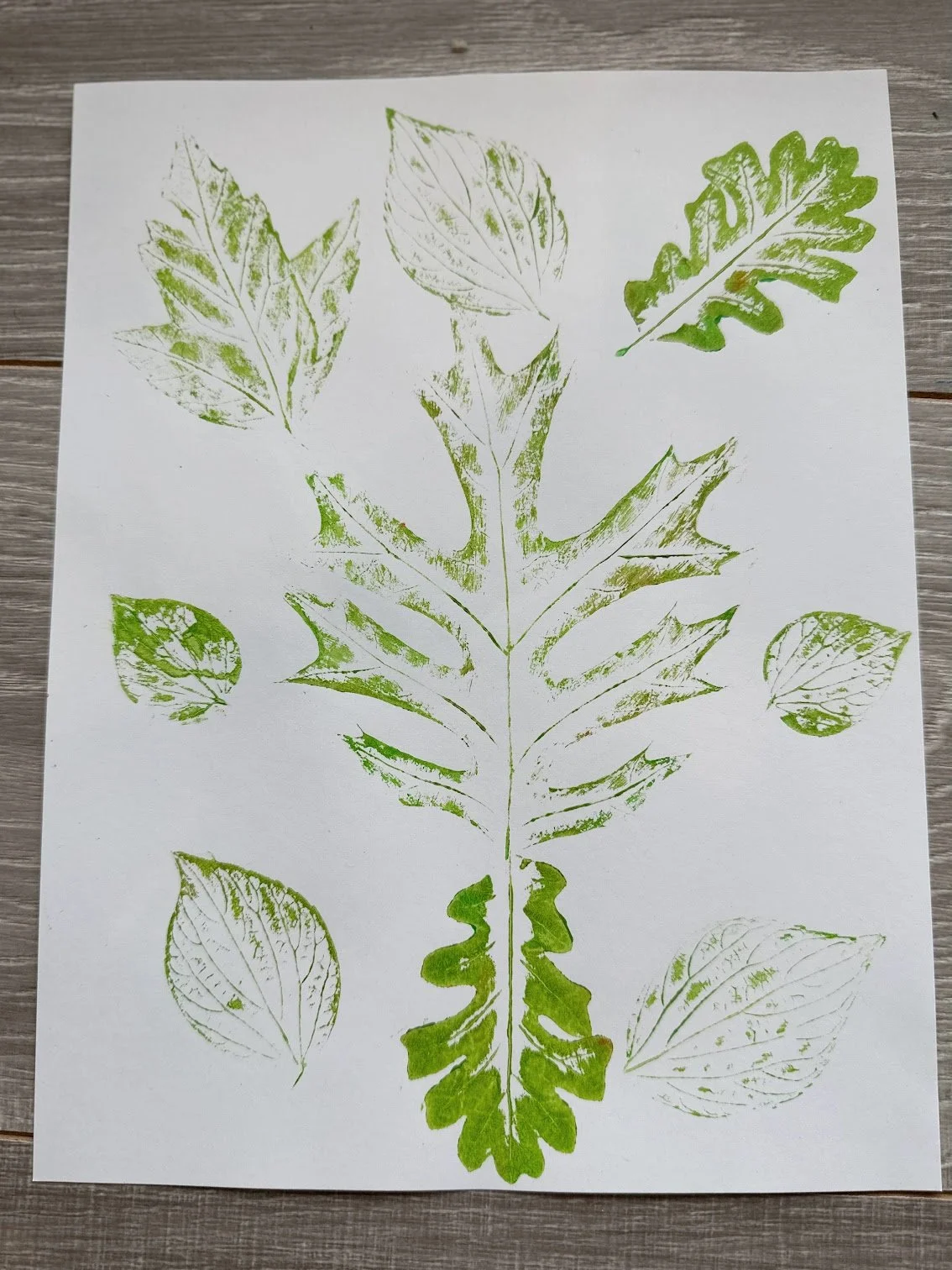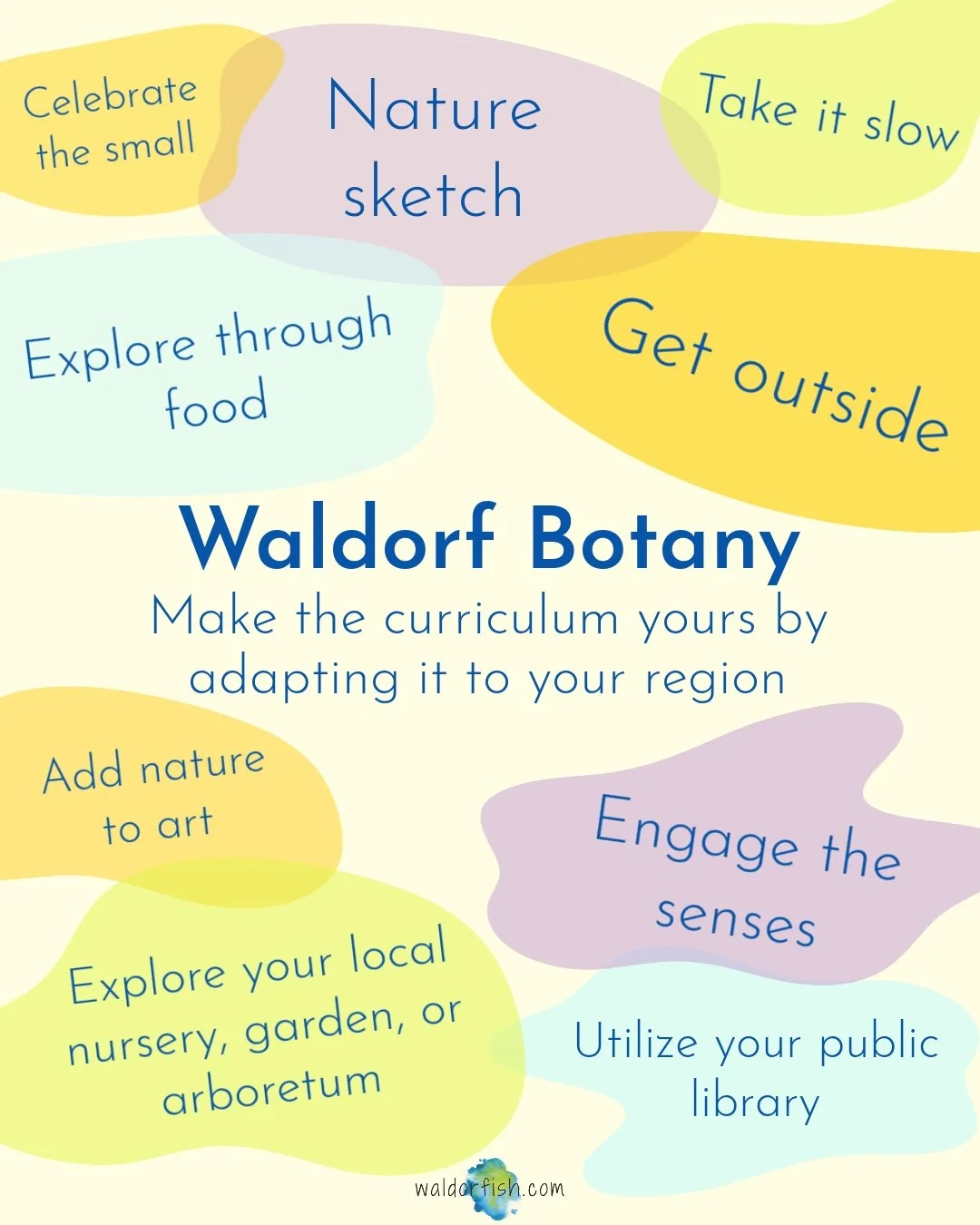Waldorf Botany: Adapting the Curriculum to Your Region
One goal of Waldorf Education is to foster a child’s connection to the world and all its parts - this begins with cultivating observations of their own surroundings and the environment in which they live.
Waldorf education thrives when the curriculum is tailored to the region in which it is presented, enjoyed, and experienced.
This is true throughout the grades and across subjects - especially in fifth grade Botany!
This leaf printing activity is found in our Botany course- it’s a great way to mix art and nature in one!
At the beginning of the Botany blocks, students engage in a general exploration of the plant world, including examples that are familiar to everyone, no matter their location, such as the dandelion or the honeybee (as a pollinator.)
But to make the Botany curriculum really resonate with the student, educators can imbue the material with examples that connect the child to the region in which they live. After all, from the desert to the coast, to the most rural or urban setting, plant life is everywhere!
Our Botany course provides over 75 lessons, enough for two blocks of fifth grade Botany curriculum, as well as supplemental activity suggestions that will help you make the curriculum your own. Plus, it provides a multitude of in-depth tips, suggestions, hands-on demonstrations, a detailed supply list, and much more to tailor the curriculum to you and your region.
Here are some simple tips to get you started!
1. Get outside
Whether this outside time is in a park, on a hike, on your balcony, or in your backyard, encouraging unstructured time outdoors to observe and connect with the living things around you is incredibly valuable. Keep it simple- go outside!
2. Explore through food
Botany studies and food go together perfectly. Go to the grocery store, and pick out three new items from the produce section to try- what part of the plant are we eating? How does it taste? How does it make us feel? Try a new veggie soup recipe, brew an interesting new herbal tea, or make a colorful salad- the possibilities are endless!
3. Nature sketch
Nature sketching (which is explored more in-depth in our Botany course) is a simple yet impactful way to create connection between the child and the natural world. Slow down, sit in nature, and sketch what you see!
4. Take it slow
Whether you are sketching, cooking, or taking a walk, enjoy the process, and take it slowly. When it comes to encouraging observations and building connections, doing less truly cultivates more.
5. Celebrate the small
Sometimes, it feels like we need to do it all. For some, long strenuous hikes to see impressive landscapes and plant life is doable, but it’s also okay if small and simple is more your style! Appreciating the small, like your own little houseplant or the apartment complex’s flower bed, is a practice in finding the beauty of the plant world that is often overlooked.
6. Add nature to art
Wreath making is an activity that combines getting outside, engaging with the plant world, and creating something beautiful!
Celebrate the beauty of nature by incorporating it into your art lessons! Use your local vegetation to create a beautiful wreath (there’s a tutorial for this inside our Botany course!), collect leaves to use for paint printing, weave flowers and grasses for a crown…the options are endless! Working with the plant life around you to create beautiful artwork is a wonderful way to build appreciation and wonder of the natural world in your own region.
7. Engage the senses
The Botany blocks are the perfect opportunity to smell, feel, taste, see and touch! Make your own essential oils, create a moss garden, taste a variety of new grains or vegetables, observe the fall colors change, and enjoy touching the different textures of tree bark. So much can be learned from these sensory experiences.
8. Explore your local nursery/garden/arboretum
Your local plant nursery, community garden or arboretum will be a wonderful, inexpensive place to explore, see new plants, and gain the insights of experts as well! Enjoy the minimal prep a visit requires, and see what treasures you discover.
9. Utilize your public library
Your local librarian is an excellent resource- ask where your local plant section is, and see what you find! Books on local plant life, gardening books, cookbooks that utilize local ingredients - you never know what you might find that will spark interest and inspiration!
Waldorf Education's emphasis on fostering a child's connection to the world is found throughout the fifth-grade Botany curriculum, and there are so many simple yet impactful ways to make the curriculum yours.
Enjoy!
About the Authors
Robyn Beaufoy is Waldorfish’s CEO, and also a course instructor for Simple Season (coming soon!), Waldorf Art for Beginners, and Weekly Art Foundations. You’ll find her intuitive touches and influences throughout everything Waldorfish offers. Robyn has been in the world of education for over 25 years, with an MA in Education and a certification in Waldorf teaching - she also homeschooled both of her children for some of that time. In 2012 Robyn co-founded Waldorfish.com, creating it with the vision of making Waldorf inspired-art and pedagogy more accessible, joyful, and doable for homeschoolers all over the world.
Caitlin Amajor is Waldorfish’s course instructor for Geometry grades 5 & 6, and Botany, as well as our Administrative Assistant. From a young age, Caitlin has been immersed in Waldorf education, attending a Waldorf school from K-8. After receiving a BA in History, Caitlin gained her certification in Waldorf teaching, and spent seven years as a Waldorf class teacher in the upper grades. With a special fondness for watercolor painting and geometry, Caitlin loves bringing Waldorf education to her students all over the world, and seeing their own individuality and style bloom from the curriculum!
More Botany resources you will enjoy:






